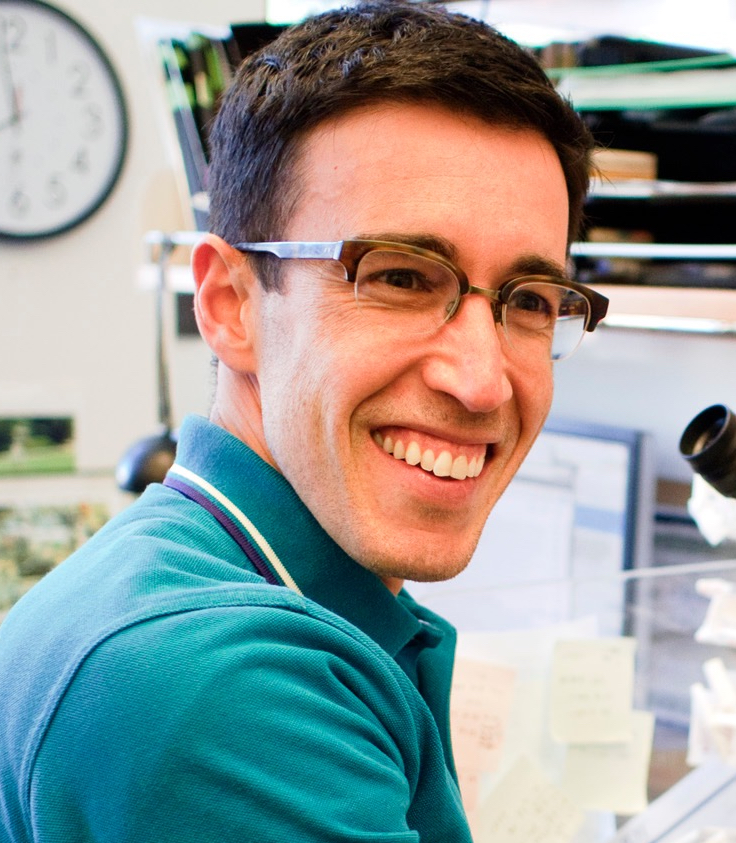Ofer Rog
Associate Professorof Biological Sciences
Chromosome Biology, Meiosis, Synaptonemal Complex, C. elegans, Yeast, Microscopy

Molecular Biology Program
Education
B.Sc. & M.Sc. Tel-Aviv University
Ph.D. University College London and Cancer Research UK
Research
Chromosome-wide regulation is of paramount importance for almost all aspects of biology and for human health. During sexual reproduction, regulated interactions between chromosomes are crucial for delivering the correct number of chromosomes to each gamete. Interactions between chromosomes are also essential for shuffling of genetic information and generation of genetic diversity. Our lab is studying a conserved protein complex that assembles between meiotic chromosomes in almost all eukaryotes — the synaptonemal complex (SC). The structure of the SC has intrigued biologists for decades: it is composed of regular striations that span the interface between perfectly parallel homologous chromosomes. The SC is essential for intimate associations between homologous chromosomes and it also regulates genetic exchanges. We combine a novel biophysical understanding of the SC, live microscopy innovations, and emerging genome editing technologies to observe chromosomes and to understand how the SC works.
References (Selected Publications)
- Hamrick A., Rog O. “Early resolution of sister chromatid during during C. elegans meiosis” bioRxiv. 10.1101/2025.03.29.646130
- Gordon SG., Rodriguez AA., Gu Y., Corbett KD., Lee CF., Rog O. (2025) “The synaptonemal complex aligns meiotic chromosomes by wetting” Science Advances 11(9) 10.1126/sciadv.adt5675
- Kursel LE.*, Martinez JEA, Rog O.* (2023) “A suppressor screen in C. elegans identifies a multi-protein interaction that stabilizes the synaptonemal complex” PNAS 120(50): e2314335120 (*co-corresponding authors) 10.1073/pnas.2314335120
- Kursel LE.*, Cope HD., Rog O.* (2021) “Unconventional conservation reveals structure-function relationships in the synaptonemal complex.“ eLife 10.7554/eLife.72061 (*co-corresponding authors)
- Almanzar DE., Gordon SG., Rog O. (2021) “Meiotic sister chromatid exchanges are rare in C. elegans.” Current Biology 31(7): 1499-1507. 10.1016/j.cub.2020.11.018 (Highlighted in: Billmyre KK., Hughes SE. (2021) “Meiosis: the elusive sister chromatid repair.” Current Biology 31(9): PR454-456.)
- Rog O.*, Köhler S., Dernburg AF.* (2017) “The synaptonemal complex has liquid crystalline properties and spatially regulates meiotic recombination factors.” eLife 10.7554/eLife.21455 (*co-corresponding authors)
- Rog O., Dernburg AF. (2015) “Direct visualization reveals kinetics of meiotic chromosome synapsis.” Cell Reports 10(10): 1639-1645. 10.1016/j.celrep.2015.02.032
- Miller KM.*, Rog O.*, Cooper JP. (2006) “Semi-conservative DNA replication through telomeres requires Taz1.” Nature 440(7085): 824-828. (*equally contributing authors) 10.1038/nature04638
